Telangana – Culture and Tradition
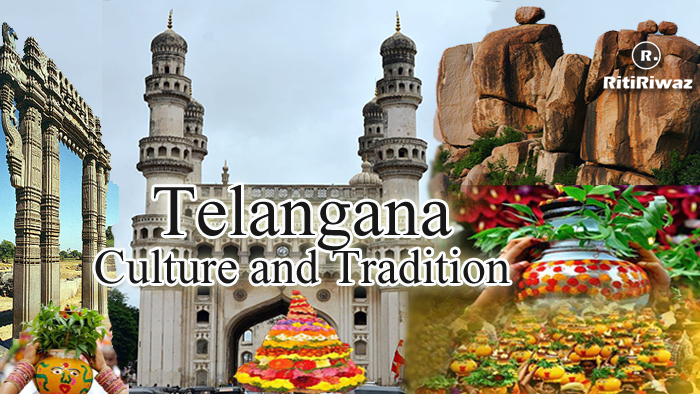
Telangana is the youngest state in India and was born on June 2, 2014, as the 29th state. Telangana is situated largely in an upland region of the Deccan and is bordered by Maharashtra to the north, Chhattisgarh, and Odisha to the northeast, Andhra Pradesh to the southeast and south, and Karnataka to the west. The capital of both Telangana and Andhra Pradesh is Hyderabad for 10 years until 2024.
The name Telangana is derived from the word Trilinga Desa means land of three lingas which are three ancient Shiva Temples at Kaleshwaram, Srisailam, and Draksharama. During the reign of Nizams, the region was known as Telugu Angana which means the place where Telugu is spoken. Hyderabad, Warangal, Nizamabad, Karimnagar, and Ramagundam are the major cities in Telangana.
History
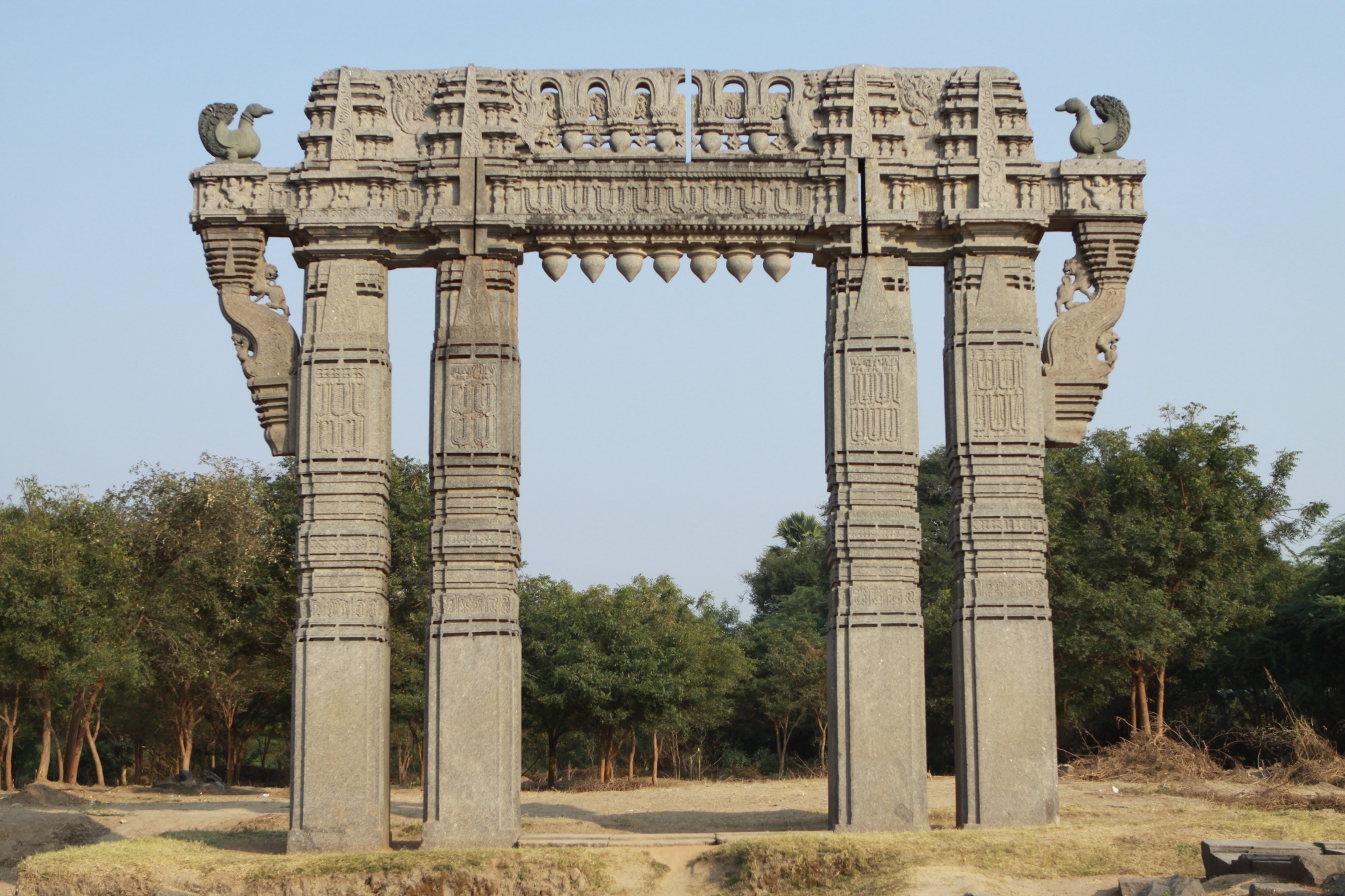
India has 29 states and 7 union territories. The State Reorganization Commission was set up in 1953 to determine the extent of states after independence. From time to time many new states are created based on the cultural diversities and language. Chhattisgarh reconstituted Madhya Pradesh, Uttaranchal reformed Uttar Pradesh, and Jharkhand was carved out of Bihar. Similarly, Telangana state previously was part of Andhra Pradesh.
The legacy of Telangana is about 5000 years old and is the representative of the Deccan Plateau and its heritage. Megalithic stone structures like cairns, cists, dolmens, and menhirs found in several districts of Telangana show that there were human habitations in this part of the country thousands of years ago. Telangana was one of the 16 Janapadas in ancient India.
During the rule of the Hindu Kakatiya dynasty and the Muslim Qutb Shahi and Asaf Jahi dynasties, the region emerged as the center of Indian subcontinent culture. Kakatiya kingdom ruled the region in AD 1083-1323 and was invaded by the Delhi Sultanate. In the next two centuries, it became a province of the Bahmani Sultanate between 1347 and 1518. When the hegemony of the Bahmani Sultanate ended, the Telangana region became part of the Golconda Sultanate (1518-1687).
With the collapse of Golconda in the face of the invasion of Aurangzeb, the region became a Mughal province. With the dissolution of the Mughal empire formed the Nizam of Hyderabad. This continued from 1720 till 1950 and during this period the region saw various shifts in status – first as a formal subsidiary to the Mughal emperor but actually to the Maratha empire (the first Nizam paid the Chauth tax to the Maratha court at Poona), later allied with the French and then with the English East India Company. Before India got independence, Telangana was part of Hyderabad and was ruled by the Nizam.
With the India Independence Act of 1947, all the Indian princely states resumed their independence, and Hyderabad was an independent state till September 17, 1948. The Nizam officiated as Rajpramukh through the first general election of 1952 and finally gave up his nominal role in 1956 when Hyderabad state was dismembered and the Telangana region annexed to the Andhra state. Thereafter, Telangana witnessed two major movements for separate statehood.
Jai Telangana agitation launched in 1969 for a separate Telangana state. As the years passed, the demand for making Telangana a state continued to grow. In 1969, 1972 and 2009, major movements were also organized to make Telangana a state. The movement in this way only helped Telangana to become a state. The government of India officially announced on December 9, 2009, to make Telangana a state because of which violence also took place in many places in Telangana state and the issue was stopped.
But the movement about Telangana state continued in other regions of Telangana. After the success in the Telangana movement central government on 3 October, 2013 stated the 29th state of south India as Telangana. Telangana state was inaugurated formally on June 2nd, 2014 and K Chandrasekhar Rao, President of Telangana Rashtra Samiti, who has been struggling for years to form Telangana State, became the first Chief Minister of this new state.
Language
The official language of Telangana is Telugu, but some people say that the Telugu language spoken in Andhra Pradesh is completely different from Telangana. Some words of Sanskrit, Urdu, and English are also spoken in the Telugu language. Before 1948, Urdu was the official language of Hyderabad, but when Hyderabad was incorporated into India, Telugu was the official language of this state. All the schools and colleges here also teach in Telugu medium.
Religion
Telangana has a great majority of Hindu religion while a small number of the population follows Islam, there are about 85.1% Hindu, 12.7% Muslim, and 1.3% Christian, and 0.9% others. One-fourth of the state’s people are members of Scheduled Castes and Scheduled Tribes.
Culture
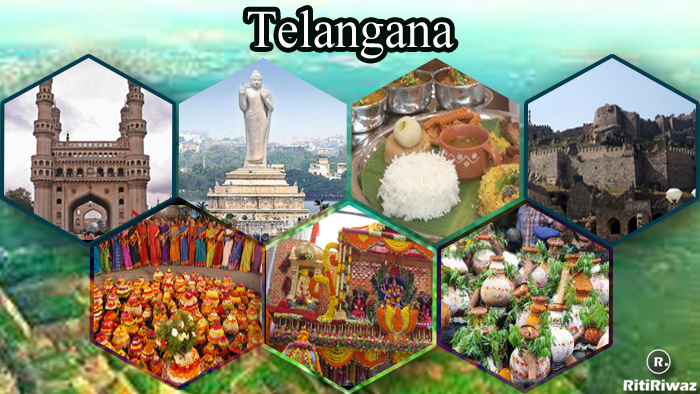
Telangana State has long been a meeting place for diverse languages and cultures. It is known as “South of North and North of South” It is also known for its Ganga-Jamuna Tehzeeb and the capital Hyderabad as a miniature India.
A mix of Persian, Mogal, Qutubshahi, and Nizam traditions can be found in the culture of Telangana. But here, most of the impact of the culture of South India is seen. The culture of these states is very rich. Various types of classical music, paintings, Burra Katha folk dances, puppet shows, Perini Sivatandavam, Gusadi dance, and Kolatam are seen here. Since Buddhism was the dominant religion up to the 6th century it was also the home of Mahayana Buddhism. This can be observed in the monuments of Nagarjunakonda and the World University at the Sri Parvata presided over by Acharya Nagarjuna.
Telangana is carved out of Andhra Pradesh and is therefore much smaller than other states. Initially, when this state was created, there were very few districts in this state. But later new districts were created in this state. When new districts were created, a total of 21 new districts were created. Now a total of 31 districts are located in this state.
The culture of this state is a unique multi-cultural where two different cultures coexist together. The influence of Persian, Nizam, Mogal, and South Indian culture is seen in it. Telangana is the representative of the Deccan Plateau and Hyderabad is at the cultural heart of Telangana and is home to numerous museums, religious edifices, and cultural venues. Hyderabad and Warangal are noted for a wealth of historic sites in and around them that tell about the centuries of Muslim rule in the region.
Suggested Read: Culture and Tradition of Indian States
Cuisine
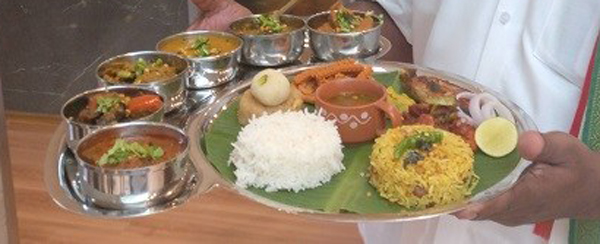
Robust food, cooked with locally available ingredients is the hallmark of Telangana cuisine. Being a semi-arid state, the staple food in Telangana is not rice but millet such as Jonna roti, sajja rotte. The flavors of this cuisine have been infused by Persian, Telugu, Marathwada, Turkish, and Mughal influences.
Telangana food has many similarities to Andhra, Maharashtrian and Karnataka cuisine, given that it is bordered by these states. While the people of Andhra use more chili in their food, those of the Telangana region use chili and masala in equal proportion. Similarly, people of the Telangana region use tamarind for making gravy. Fresh vegetables like tomatoes, brinjal, bitter gourd, pulses, tamarind play a big role in the vegetarian dishes. The dishes based on goat and lamb are preferred over chicken in the dishes.
There traditional food based on millets and food of this region os the spiciest in the Deccan region. Telangana offers a variety of preparations in vegetarian and non-vegetarian dishes they have a lot of mutton, chicken and vegetarian dishes to choose from. Some of the popular food are Kodi fry, Chepa Fry, Mirchi Bhajji, Mentem Koora Mamsam, Oori Koodi Koora, Mudda Pappu. Vepudu. Kodi pulusu and Mamsam (meat) vepudu are popular dishes in meat. Gutthi Vankaya (Brinjal), Aloogadda (potato) koora & fry, Tomato pappu (gatti pappu), Palakura pappu (gatti pappu), Cauliflower fry, Bachali kura are some of the many varieties of vegetable dishes.
A must-try Hyderabadi dishes include Biryani, Haleem, Naan Qalia, Kebabs, Keema Samosa, Mirchi ka Salan, Khubani ka Meetha, and Lukhmi among others. Pottel Pachadi is a pickle made out of mutton. Hyderabadi biryani is a popular dish in the area and is famous worldwide. Sweets of Telangana are Khubaani Ka Meetha, Bakshalu, Rawa Laddos, and Parvannam and their drinks are Gadaka and Ambali.
Suggested Read: Famous Food Of Indian States
Costume
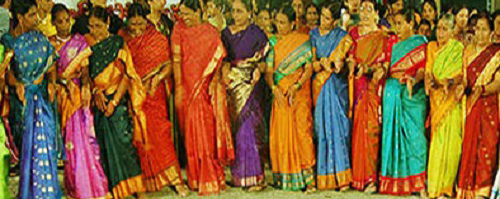
Even though Andhra Pradesh and Telangana have been divided but they have almost the same cultures and traditions. Whereas, Telangana has a great foreign influence on their clothing styles as they are continuing to adopt the same. Telangana is the home to some of the finest historical cloth making/fashion and dying traditions of the world. Its rich cotton production, with its innovative plant dye extraction history, stands next to its diamond mining.
Traditional Women wear sari in most parts of the state. Langa Voni, Shalwar kameez, and Churidaar are popular among the unmarried Women. Some of the famous sarees made in Telangana are Pochampally Saree, Gadwal sari. Pochampally sarees have been popular since the early 1800s. In the 19th century popular with traders in the silk route which symbolized luxury and power. Found a place in UNESCO tentative list of world heritage sites as part of ‘iconic saree weaving clusters of India’. Pochampally saree received Intellectual Property Rights Protection or Geographical Indication (GI) status in 2005.
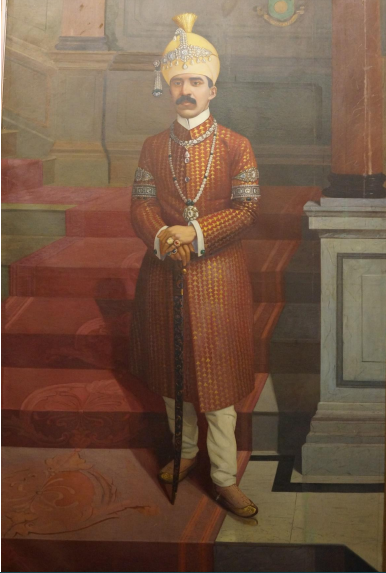
Male Clothing includes the traditional Dhoti also known as Pancha. The Hyderabadi Sherwani was the dress of choice of the Nizam of Hyderabad and Hyderabadi nobles. The Hyderabadi sherwani is longer than normal sherwani reaching below the knees. Sherwani is usually worn during the wedding ceremonies by the groom. A scarf called a dupatta is sometimes added to the sherwani.
Suggested Read: Traditional Dresses Of Indian States
Dance and Music
Dance form in Telangana receives the royal patronage and attained finesse. Dance form Perini Sivatandavam or Perini Thandavam is also known as the dance of warriors has its evolution of Kakatiya rule. Golla Suddulu, Oggu Kathalu, and Gotralu are dance forms that evolved with a tradition of story-telling of various challenges faced by commoners in life and solutions to tide over them.
Dhoom Dham is an old art form mingled with new forms. A variant of Yakshagana, Chindu Bhagavatham is performed widely across Telangana. Qawali, Ghazals, and Mushairas evolved under the patronage of Qutub Shahi and the Asafjahi rulers in and around the capital city of Hyderabad.
Kancherla Gopanna, popular as Bhakta Ramadasu is a pioneer in composing ragas for Carnatic music. Many southern India’s major composers of Indian classical music have been from Telangana. The state has a rich tradition in classical music, painting and folk arts such as burrakatha, shadow puppet show, and perini shiva tandavam, gusadi dance and kolatam.
Fairs and Festival
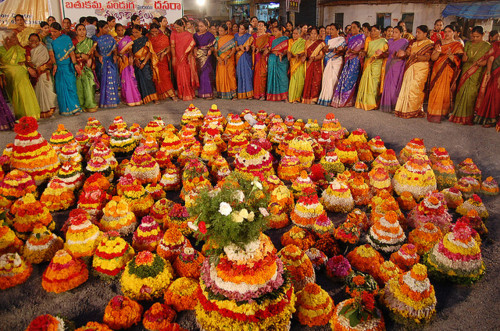
The region’s major cultural events celebrated are the “Kakatiya Festival” and the Deccan Festival along with religious festivals of Bonalu, Bathukamma, Ugadi, Sankranthi, Milad un Nabi and Ramadan.
Bathukamma is a part of the Dasara festival very unique and colorful festival in Telangana. It is a festival of flowers which reflects the cultural and traditional spirit of Telangana. According to the lunar calendar, it falls sometime in September/October and is celebrated by Hindu women.
Bonalu is also a popular festival of Telangana celebrated every year in the month of Ashadh when Mahakali is worshiped and turmeric water, neem leaves are taken in a new pot. After Bonalu villagers stop eating non-vegetarian food for a month.
Vijayadashami, also known as Dussehra or Navaratri is an important Hindu festival celebrated in Telangana. The festival which symbolizes the victory of good over evil is celebrated with traditional fervor, devotion, and gaiety across Telangana.
The Islamic holy month of Ramadan is observed with fervor by Muslim brethren in Hyderabad and other parts of Telangana. The biggest congregation is witnessed at the historic Mecca Masjid near Charminar.
Sammakka Saralamma Jatara or Medaram Jatara is a world-renowned tribal festival. The Jatara is celebrated annually at Medaram in Jayashankar Bhupalpally district.
Art and Craft
Telangana is a great place for arts and crafts with many astounding handicrafts, which are also considered a rich and proud tradition of the state. Some of the popular crafts are Bidri Craft, Banjara Needle Crafts, Wood carving, Dokra Metal Crafts, Nirmal Arts, and Bronze Castings.
Telangana is famous worldwide for its amazing Bronze castings. Telangana produces quality handlooms which are quite popular Narayanpet handlooms, Siddipet Handlooms, Gadwal, Pochampally handlooms, and cotton durries are some of the best weaving tradition of India. Nirmal Toys and jewelry made of pearls and lacquer are quite prominent in the state.
The various art and craft clusters are spread across many districts of the state, heralding a proud tradition, which reflects the cultural excellence of Telangana and the artistic finesse of craftsmen and artisans of the state.
Famous People
Zakir Husain – India’s first Muslim President was born in Hyderabad.
P V Narasimha Rao – 9th Prime Minister of India was born in Karimnagar district of Telangana.
Dia Mirza – Miss Asia Pacific of the year 2000 was born in Hyderabad.
Shabana Azmi – Popular actress was born in Hyderabad.
Mohammad Azharuddin – Famous cricketer and captain of the Indian Cricket team was born in Hyderabad.
Among others are Ali Yavar Jung, V V S Laxman, Sania Mirza, Saina Nehwal, Ram Gopal Verma, Sushmita Sen, Tabu and Farah were born in Hyderabad.
Tourism
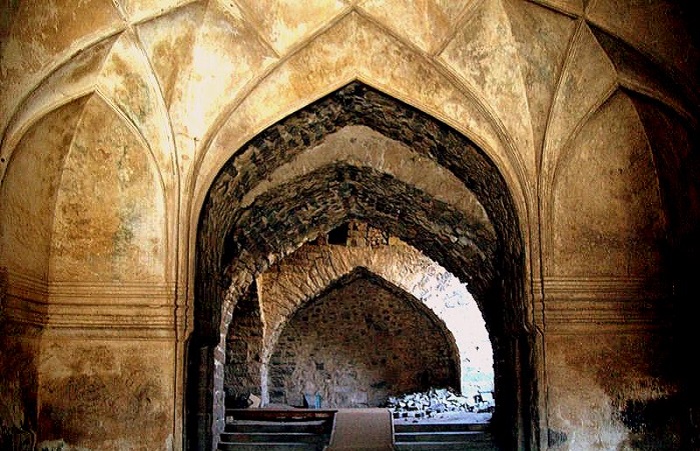
Telangana offers various tourist attractions to its visitors. The main tourist places Charminar, Golconda Fort, Qutb Shahi Tombs, Chowmahalla Palace, Falaknuma Palace, Birla Mandir and Nagarjun Sagar, Bhongir Fort, Warangal Fort, Khammam Fort are some of the monuments in and around Hyderabad.
Places of Hindu worship destination are Bhadrachalam Temple, Gnana Saraswati Temple, Yadagirigutta Temple, Ramappa Temple, Vemulawada Raja Rajeswara temple, the Thousand Pillar Temple.
Muslim worship destination is Makkah Masjid near Charminar, Khairtabad Mosque, Koh-e-qaim, Mian Mishk Masjid, Toli Masjid, and Spanish Mosque.
For Christians Diocese of Dornakal of the Church of South India, Bahe Church of South India, and Medak Cathedral are the main destinations.
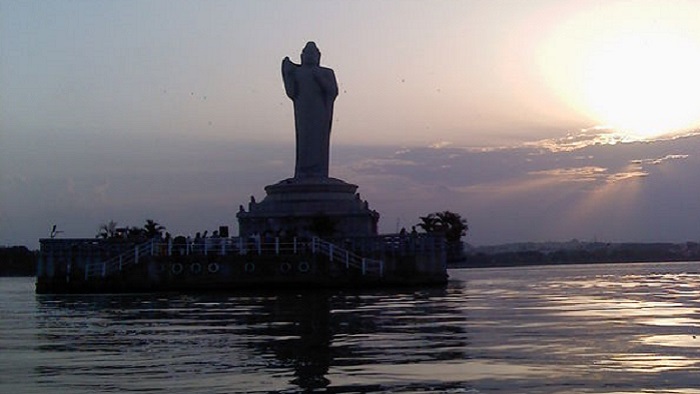
There are also some Buddhist destinations, such as Nelakondapalli, Dhulikatta, Phanigiri and Kolanpaka.
Eturunagaram Wildlife Sanctuary, Kawal Tiger Reserve, Pranahita Wildlife Sanctuary, Manjira Sanctuary and other places to visit.
Places to visit in Hyderabad

Hyderabad is the fifth-largest city in India. The history of Hyderabad city is very old, Qutub Shahi, Mughals, and Nizams ruled here. Hyderabad is called the ‘city of pearl’, the only place in the world where big diamonds, emeralds, and real pearls are found. It is a major center of global trade. Lad Bazar, Begum Bazar, Sultan Bazar are among the famous markets of Hyderabad.
- Char Minar
- Falaknuma Palace
- Chaumhalla Palace
- Asman Garh Palace
- Taramati Baradari
- Old mansion
- Bella Vista
- Royal mosque
- Anand Buddha Vihar
- Birla Temple
- Jagannath Temple






